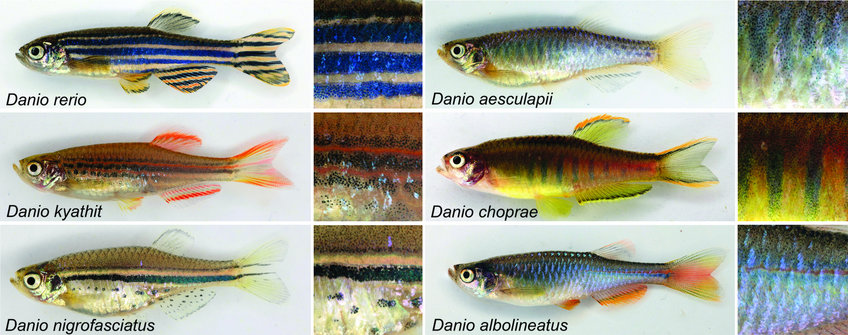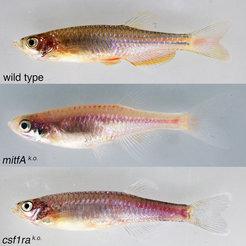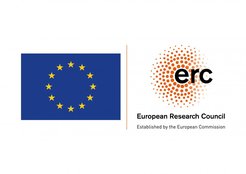
The evolution of colour patterns in Danio species
A common feature of colour patterns in basal vertebrates seems to be the layered arrangement of the pigment cells in the skin: xanthophores are typically present on the outermost layer, iridophores in the middle and melanophores in the inner layer. We propose that the stem cell origin, lineage and dispersal, as revealed in our clonal analyses, is probably a general mechanism common to all fish, perhaps all basal vertebrates.

In other Danio species the colour patterns on the flanks as well as on the fins are amazingly different. Hybrids between zebrafish and other species are viable and show a pattern very similar to zebrafish. We have established breeding colonies for Danio kyathit (pattern similar to zebrafish but with erythrophores), Danio aesculapii (vertical melanophore bars), Danio albolineatus (almost no pattern, and Danio choprae (vertical melanophore bars similar to D.aesculapii) and started genomic approaches to identify the causative alleles responsible for the pattern variations between these closely related species. Using the CRISPR/Cas9 technology, we have created loss-of-function mutations in the genes autonomously required in individual chromatophore types such as nacre/MitfA, pfeffer/Csfr, and shady/Ltk. We started to create chimeric animals by blastomere transplantations with the aim to uncover the potential of individual chromatophores to integrate into existing patterns, and reveal the degree and mode of interaction between the chromatophores in comparison with cells from D. rerio.
We aim to identify the genes underlying morphological evolution by comparing the genetic tool kit for pattern formation between different Danio species. As a first step we create mutations in genes known to be involved in direct cellular contacts in zebrafish. The mutant phenotypes will provide important information on the role of these cellular interactions in producing the different patterns. We will also use the CRISPR/Cas9 system to transfer allelic variants from other species into zebrafish and vice versa to see whether and how the striped pattern can be modulated.
We will also analyse whole genome sequences in combination with exome and transcriptome data for several different Danio species. The sequence comparisons will help identifying regions that are likely under diversifying selection and might be responsible for the differences in the phenotypes of closely related species; they may allow the identification of as yet unknown components

Supported by 2016 ERC Advanced grant Daniopattern.
The project has received funding from the European Research Council (ERC) under the European Union’s Horizon 2020 research and innovation programme (grant agreement no. 69 42 89).

